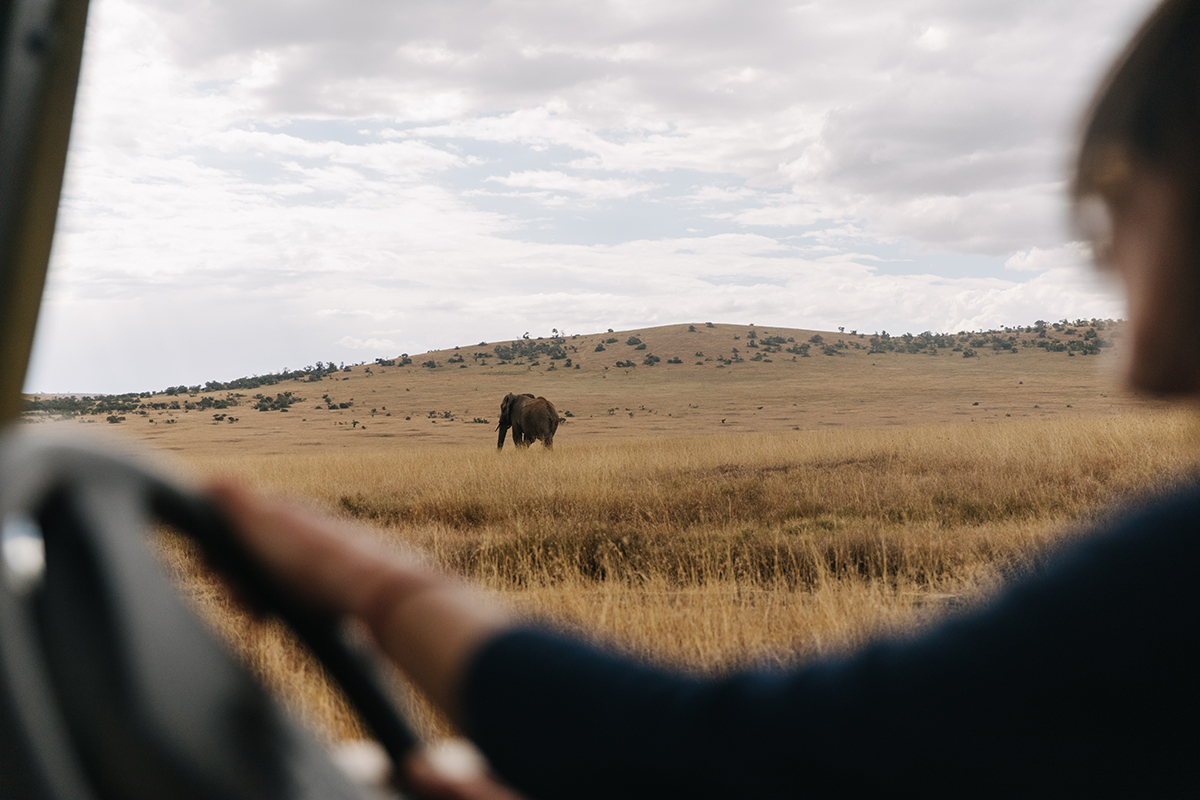Published 14th Feb. 2024
Reading time
Elephants are the gentle giants of the animal kingdom. Earning a place in one of Africa’s ‘Big Five’ (elephants, buffalo, lions, leopards and rhinos), they are the world’s largest land mammals, weighing up to 6000kg and living for as long as 70 years. They’re also considered one of the keystone species – animals that play a crucial role in shaping the landscape around them. Read on to find out more about these impressive creatures with our roundup of seven cool elephant facts…
1. African vs Asian
2. Trailblazing trunks
3. Terrific tusks
4. Matriarchal mammals
5. Thick-skinned
6. Emotionally intelligent
7. Intuitive young
1.
There are three recognised elephant species: Asian, African savannah or bush, and African forest. You’ll find the African varieties spread across different habitats in sub-Saharan Africa, while the Asian species are scattered across 13 countries in South and Southeast Asia. The easiest way to tell them apart? Take a look at the size of their ears. Giving Disney’s Dumbo a run for his money, African elephants have the largest ears, which are (rather conveniently) shaped like Africa. By comparison, Asian elephants’ ears are much smaller and are shaped like India.

2.
Elephants’ trunks might just be their most iconic feature. Containing over 150,000 muscles and tendons, these powerful appendages can lift up to 350kg, making elephants the strongest animals alive. But these majestic creatures can be delicate, too. Elephants’ trunks are the most sensitive organ of any animal, and using their trunk ‘fingers’, they can pick up a grain of rice or blade of grass. To top off this elephant fact, did you know that these incredible mammals’ trunks even double up as snorkels? Used for sucking up water, elephants can hold an amazing eight litres in their trunks.
3.
Growing continuously throughout the animal’s life, tusk length is a great way to determine the age of an elephant. They first appear when calves are two years old, and are used for foraging and breaking up food, as well as a form of defence when fighting. And while it’s no secret that elephant tusks are made out of highly sought-after ivory, here’s an elephant fact to impress at your next pub quiz: the word elephant is derived from the Greek word for ivory, elephas. Tragically, the illegal ivory trade continues to thrive, which, along with a loss of habitat, has left all three elephant species endangered.
4.
The feminist icons of the animal world, elephants’ matriarchal tendencies are just one of the many reasons why we’re so fond of them. Herds of up to 100 female family members are led across savannahs and dense forests by the oldest, largest female in the group. And whereas male elephants take no part in the upbringing of their young, the entire female herd is enlisted to help raise calves – humankind, take note. Meanwhile, males leave their maternal herd when they are 12-15 years old to live nomadic lives or join all-male groups. This doesn’t sound quite so fun, to us.

Image by Olivier Romano
5.
Although elephant skin looks like it could do with a good moisturise, there’s a reason for its cracked appearance. Covered in loose folds, elephant skin retains up to ten times more water than smooth, flat skin would. While not the cuddliest-looking creatures, their skin is crucial in keeping them cool and preventing dehydration. African elephants’ skin is more wrinkled than Asians’, owing to their drier, hotter climate. And when it comes to sunburn, we could learn a thing or two from elephants. Skipping the suncream, elephants rely on regular dust and mud baths to protect their skin against the sun’s rays.
6.
It turns out there’s truth in the saying 'an elephant never forgets'. Who knew? With the largest brain of any animal, elephants have a bigger and denser temporal lobe than humans. These modern-day mammoths are even known to show emotions like ours, such as crying and grieving for family members. Elephants also impress with their variety of communication methods, which range from trumpet calls and body language to seismic signals. With an ability to hear sound waves below the human hearing range, elephants can also detect water sources from up to 12 miles away. Pretty incredible stuff.
7.
Concluding our list of elephant facts is some trivia about their calves. Did you know that a newborn elephant can stand up just 20 minutes after its birth and walk within an hour? After two days, you’ll even see calves keeping up with the strides of the herd. Humans can only dream. Clearly, elephants’ lengthy 22-month gestation period gives newborns plenty of time to become wise (and athletic) beyond their years.
Written by Hannah Whitehall | Header image by Olivier Romano
Practical advice and inspiration for your next trip

Searching for the best safaris in India? We’ve got you covered. Whether you’re keen to track tigers in Madhya Pradesh, admire Asiatic lions in Gujarat or photograph forest eagle owls in Kerala, your India holiday awaits. While Bengal tigers steal the limelight in Bandhavgarh National Park, don’t forget about the shaggy sloth bears (though they’re not as cuddly as they look). Feeling up for the adventure?
15th September 2025 - India Safari & Wildlife

With their sleek, tangerine-tinged coats, piercing eyes and commanding presence, nothing beats the thrill of seeing a tiger in the wild. And where better than in India, home to the largest population on Earth? But when it comes to the best time to see tigers in India, it all depends on what you want from your trip. Whether you’d rather vivid green landscapes or crowd-free safaris, we’ve got the insider intel on when to see India’s famous big cats.
23rd June 2025 - India Safari & Wildlife

Where are the best places for whale watching? We’re glad you asked. From the picturesque Icelandic town of Husavik to the coastal haven of Mirissa in Sri Lanka, there are plenty of destinations to marvel at these majestic creatures. Picture this: the air is still and all you can hear is the creaking of the catamaran and the odd, excited whisper. You scan the horizon, desperate to spot the tip of a fluke or a distant plume of whale breath.
16th June 2025 - Safari & Wildlife

Our team of destination experts will get to know you and your unique requirements for your holiday

We work with you to build an ultra-personalised holiday itinerary with your choice of accommodation, experiences and activities

All of our holidays include little extras designed to make a big difference to your trip, from fast-tracking you through airport check-in and security to our network of local Concierges